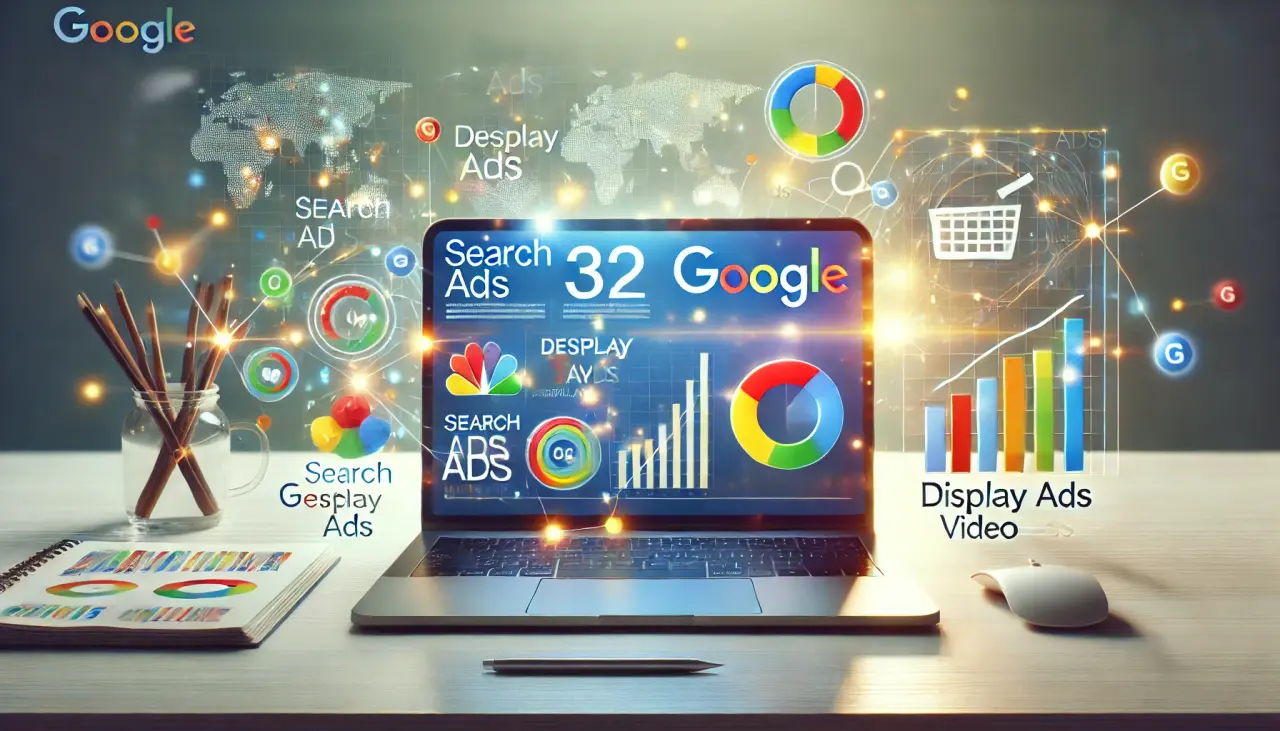Google Ads is a powerful tool that can transform small businesses by increasing visibility, driving traffic, and boosting conversions. However, mastering Google Ads can seem overwhelming for small business owners with limited budgets and resources. This guide provides actionable strategies to help you master Google Ads and achieve success.
What Are Google Ads?
Google Ads is an online advertising platform where businesses can display ads on Google Search results pages, YouTube, and partner sites. It operates on a pay-per-click (PPC) model, where advertisers only pay when users click their ads.
Why Should Small Businesses Use Google Ads?
- Cost-Effective Advertising: You control your budget with Google Ads.
- Precise Targeting: Reach your target audience based on location, demographics, and interests.
- Measurable Results: Access detailed reports on campaign performance.
- Flexibility: Google Ads can adapt to your business size and goals.
Steps to Master Google Ads for Small Business Success
1. Define Clear Goals
Before launching a campaign, identify your objectives. Are you aiming for website traffic, leads, or sales? Clear goals guide your campaign setup and success measurement.
2. Conduct Keyword Research
Keywords are the backbone of Google Ads. Use tools like:
- Google Keyword Planner
- SEMrush
- Ahrefs
Find keywords with high search volume and low competition that align with your business offerings.
3. Choose the Right Campaign Type
Google Ads offers various campaign types:
- Search Ads: Appear on Google Search results pages.
- Display Ads: Visual ads shown on websites.
- Shopping Ads: Ideal for e-commerce businesses.
- Video Ads: Shown on YouTube.
Select the type that matches your goals and target audience.
4. Optimize Your Ad Copy
- Headlines: Make them attention-grabbing and relevant.
- Descriptions: Highlight your unique selling points (USPs).
- Call-to-Action (CTA): Use phrases like "Shop Now" or "Get Started" to prompt action.
5. Leverage Ad Extensions
Ad extensions provide additional information, such as location, phone numbers, and site links. They make your ad more informative and clickable.
6. Set a Realistic Budget
Google Ads allows you to set daily budgets and bids. Start small, monitor performance, and scale as you see results.
7. Monitor and Optimize Campaigns
- Review performance metrics like click-through rates (CTR), cost-per-click (CPC), and conversion rates.
- Use A/B testing to improve ad performance.
8. Use Remarketing
Remarketing targets users who previously interacted with your website or ads, helping to re-engage potential customers.
FAQs About Google Ads
Q1: How much should a small business spend on Google Ads?
It depends on your goals and industry. Start with a budget you’re comfortable with, such as $500-$1000 per month, and optimize based on performance.
Q2: What’s the difference between PPC and SEO?
PPC involves paying for ad placement, while SEO focuses on organic traffic through search engine optimization.
Q3: Can I run Google Ads without a website?
Yes, you can create Google Ads campaigns with a landing page created through Google Ads or Google My Business.
Q4: How long does it take to see results?
Most campaigns show initial results within a week, but consistent performance improvement requires monitoring and optimization over time.
Conclusion
Mastering Google Ads is crucial for small businesses aiming to thrive in a competitive online marketplace. By defining clear goals, conducting thorough keyword research, and continuously optimizing campaigns, small businesses can unlock significant growth opportunities. With patience and persistence, Google Ads can become a cornerstone of your business's digital marketing strategy.


.webp)
.webp)
Post a Comment